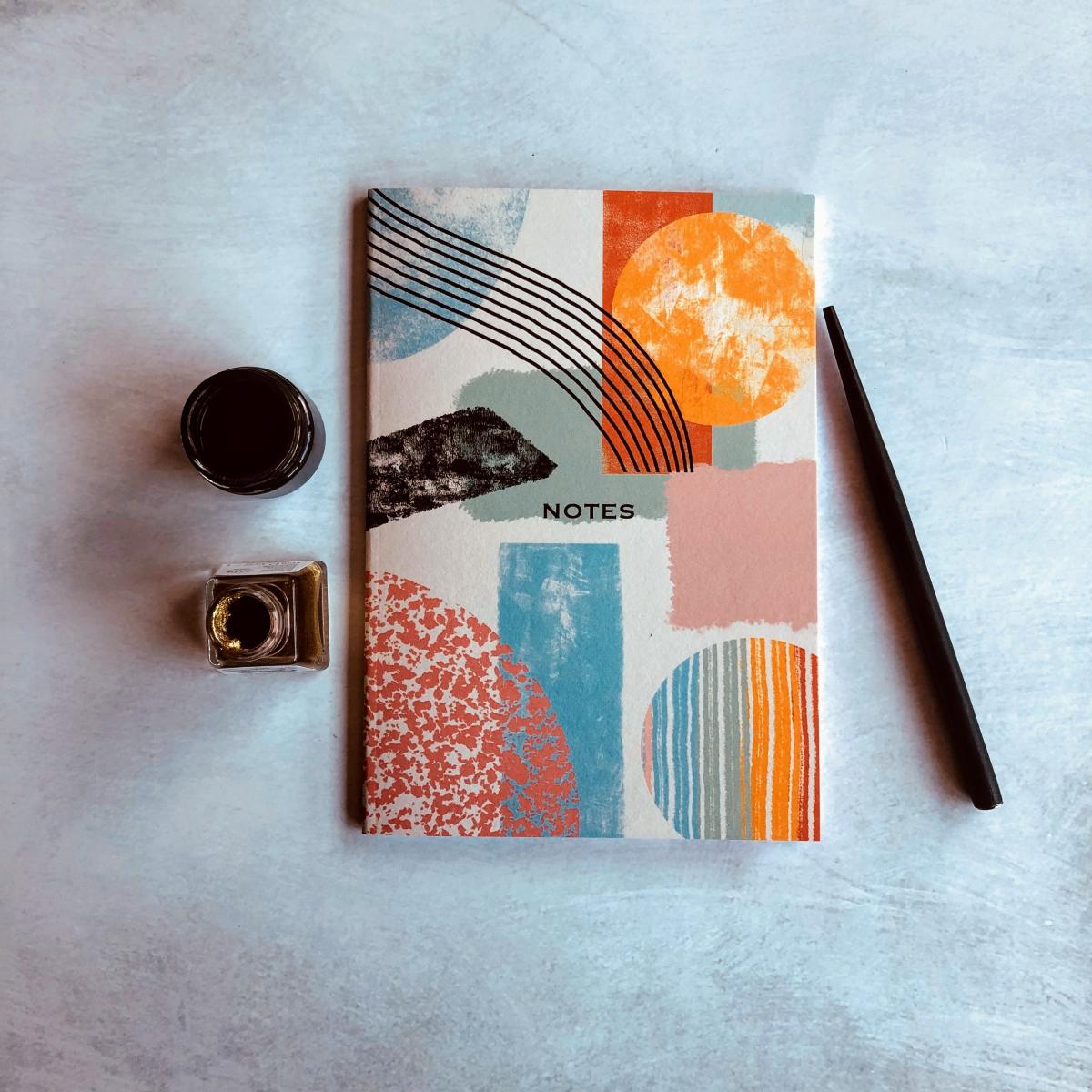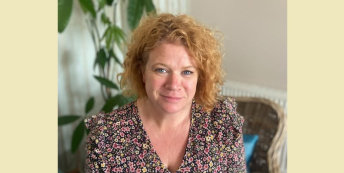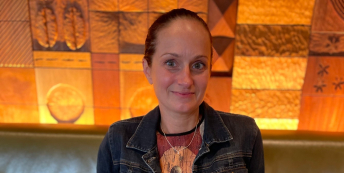“I'd always wondered whether I would be better suited to something else.”

What work were you doing previously?
My most recent job involved working as a Product Management Lead at Barclays Bank PLC, lending my expertise to various HR Data Science projects.
What are you doing now?
In July last year, I launched The Design Palette, my own pattern design brand.
I offer two main services – creating illustrations for licensing, and manufacturing my designs on products such as stationery and greeting cards.
How did you feel in your work before you decided to make the change?
I really enjoyed the projects I worked on in my role as a Product Management Lead.
We'd only recently introduced the People Data Science capability, so it was an exciting time to get involved in the upcoming projects and influence strategy.
Why did you change?
Since the start of my career, I'd only ever worked in HR and had always wondered whether I would be better suited to something else.
Although I really enjoyed working in Analytics, I was missing the space to get creative and have full autonomy over my day-to-day activities. When I gravitated towards Illustration and Pattern Design, it automatically felt like a good fit.
I could see myself doing it day in and day out.
When was the moment you decided to make the change?
I started practising my drawing and digital art skills a lot after completing some courses on the Adobe suite.
To get some initial feedback on my designs, I printed my artwork onto wrapping paper and wrapped gifts with it. I got lots of positive feedback, which gave me the boost I needed.
How did you choose your new career?
I love learning new skills and am always on the lookout for creative things to do.
I came across a course on learning the Adobe suite and decided to sign up. My intention was that it would be something to do in my spare time.
However, as soon as I discovered the world of pattern design, I found myself wanting to learn more. Soon I was reading and learning about it on my commute, and spending most of my evenings and weekends practising.
I'd never really been interested in art, but I suddenly felt like I was missing out. I completed the course in a year, and it was at this point I started thinking of a potential career change.
Are you happy with the change?
Yes, absolutely.
I've had a very steep learning curve since I left my role in HR Analytics, but it has been an amazing experience.
There are skills that you learn running your own business that you just cannot learn in a corporate setting. You are very much in charge of the pace at which you develop and the direction you choose to take.
It's still early days, but I'm enjoying the change to self-employment. It's an amazing feeling being able to realise my dream of running my own business. I find the idea of having complete autonomy in all decisions, from the direction I choose to take my business to more routine (but equally important) decisions such as the hours I chose to work, extremely freeing.
What do you miss and what don't you miss?
I do miss the analytical aspect of my job.
Being able to provide insights on complex commercial problems that drive critical decisions was really exciting.
That said, I have been able to take advantage of some of this analytical experience in my new role. It's important to understand my business data to be able to make the right decisions: for example, knowing which sources drive website traffic helps me in deciding where I should channel my marketing budget.
How did you go about making the shift?
I did the following to make the transition:
- Developed my illustration skills and technical capability to turn hand-drawn art into digital-friendly designs. This is a constant learning process!
- Arranged mentoring sessions with an experienced designer in the same field of interest.
- Carved out as much time as possible to research the industry. I was lucky enough to have a supportive line manager who approved my request to work compressed hours (this meant I was able to work ten days in nine, giving me one day off every other week). This gave me the space to work full-time and use my day off to further develop my design skills. It still meant that I had to work during weekends, but it certainly helped take some pressure off.
What didn't go well? What wrong turns did you take?
I think one of the biggest difficulties for small businesses is having a substantial marketing budget and knowing the most suitable advertising channels for your business.
It's very easy at the start to spend money on advertising using the wrong channels or targeting the wrong customer base.
When I began my business, I advertised via Google Ads. It did bring in a lot of traffic to my website, but it did not help increase my sales. I realise now that this was because I was targeting the wrong audience.
Marketing is important, but you're throwing money away if you're targeting the wrong people!
How did you handle your finances to make your shift possible?
When I knew I wanted to make the change, my husband and I worked through our finances to see if it would be feasible for me to work self-employed.
My husband was fully supportive of my career change and we planned for it by saving a year in advance. I've also been able to use some of my own savings to kick-start my business.
What was the most difficult thing about changing?
Starting a business can get quite lonely.
I went from sitting in an open-plan office surrounded by people, to working in my flat on my own.
I enjoyed working from home twice a week in my previous role, but I felt isolated doing it every single day of the week. I remedied this by traveling into London twice a week.
The cultural shift from corporate to creative has also required some adjustment. Moving from a corporate culture where everything is deadline driven, to a more creative one where things are a little more fluid (especially when you drive your own deadlines) has been a learning experience.
I find setting deadlines for myself helps create a sense of urgency and provides structure to my day.
What help did you get? 
I paid for mentoring sessions with a qualified designer to fully understand what my day-to-day life would be like, and to learn more about the industry.
In addition, I had my mentor review my designs so I could understand areas for improvement.
I also researched online – Google is a treasure trove of knowledge!
What resources would you recommend to others?
Whichever career you decide to move to, make sure you spend some time beforehand researching how this change will impact your day-to-day life, both personally and professionally.
It's very easy just to look at the positives (especially if you're not enjoying your current role), but it's important to be pragmatic.
If it's a creative career you're looking towards, I would also recommend going to a couple of industry-specific trade fairs. The first one I went to was Top Drawer, and I learnt a lot just by walking around and talking to members within the design community.
What have you learnt in the process?
1) Managing a business is hard work. This may seem obvious, but it can't be stated enough. No one tells you if what you're doing is right or wrong, so there's a lot of learning on the job.
2) Running any type of business requires you to be comfortable with uncertainty – you can do a lot of the groundwork and work tirelessly, but there's no telling if something will work out. Data can help to a certain degree, but there'll be a lot of trial and error at the start.
3) You need to be able to motivate yourself every day, all day. Even on the bad days.
4) Multi-tasking has taken on a new meaning. My skills were really tested when I started my own business. In the first six months everything I was doing felt new and unfamiliar. It meant that not only was I trying to learn multiple things all at once, but I also had to do it at high speed.
5) You need a supportive and trusted network of family and friends around you to celebrate your big (and small) successes, and to lean on when times get rough. My husband has been my biggest champion from the get-go – he's motivated me on my low days and celebrated my successes like they were his own. When I sold my first greeting card, he reacted like I had won the lottery!
What would you advise others to do in the same situation?
Keep a very open mind as to what your career change may look like.
If someone had told me five years ago that I'd be running a design business, I wouldn't have believed them.
Talk to people at different points of their career change – someone who's just made the leap, someone a year in, and someone who is fully established in their new career. Their insights will be super-valuable in understanding the good and bad bits of your transition.
Talk to people in the industry you'd like to work in – find out what a typical day looks like, and even better, go and get some practical experience.
Take baby steps – don't expect to transition overnight. Start by networking, try out the new role and see where it takes you.
Most importantly, don't talk yourself out of it, there are always reasons not to change, but imagine the opportunities you will lose out on if you don't make the jump!
To find out more about Komal's business, visit www.thedesignpalette.co.uk.
What lessons could you take from Komal's story to use in your own career change? Let us know in the comments below.



